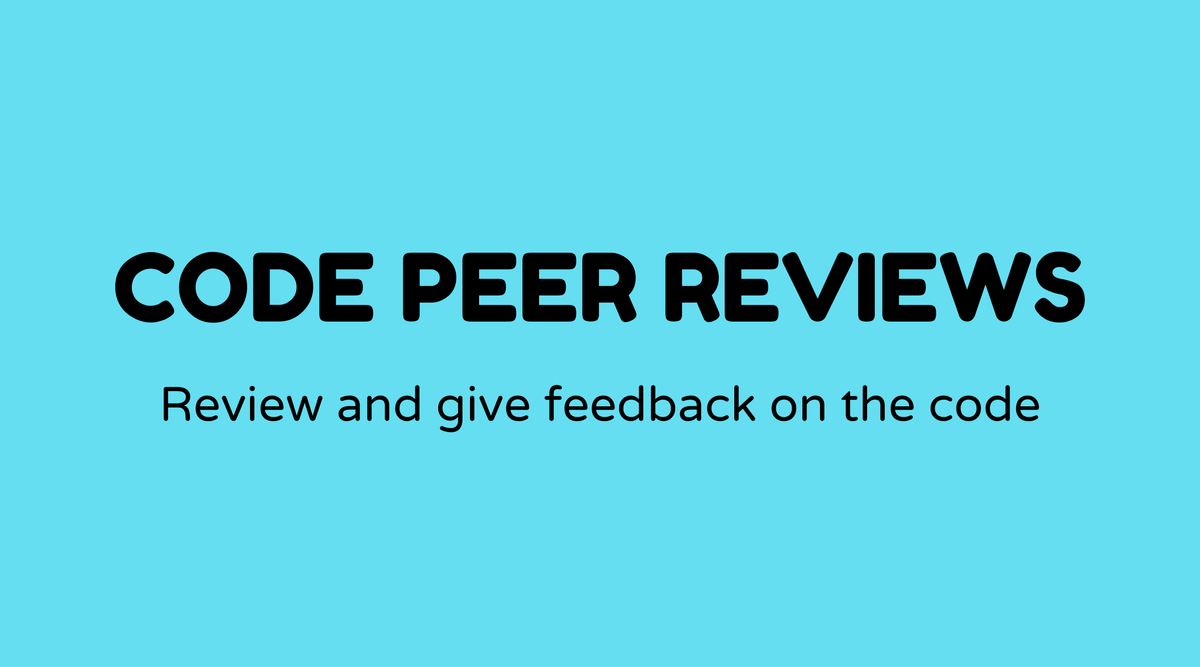Code peer reviews

Overview of Code Peer Reviews:
Code peer reviews involve a collaborative process where developers assess each other's code. This practice assures code quality, encourages knowledge sharing, and improves team communication. By having multiple perspectives, errors can be detected early, resulting in more resilient software. Code peer reviews are not solely about identifying mistakes; they also provide an opportunity to discuss enhancements and refactoring options.
Why Code Peer Reviews Matter:
Having additional individuals examine the code can illuminate issues that may not be visible to the initial developer. This practice aids in upholding coding standards and prevents bugs from emerging in production. Furthermore, code peer reviews serve as an excellent learning opportunity. Junior developers gain valuable insights by observing the thought processes and coding practices of more experienced team members.
What is Code Peer Review:
At its essence, a code peer review is a structured evaluation of computer source code intended to identify bugs and improve the overall codebase. It is usually conducted in a team setting, where one developer reviews the work of another. The focus can range from checking for errors, ensuring conformity to coding standards, analyzing design and architecture, to optimizing performance.
How to Conduct Code Peer Reviews:
-
Prepare the Groundwork:
- Ensure your code is complete and functions correctly before submission. Comment on your logic where needed for clarity.
-
Submit for Review:
- Use a version control system, like Git, to submit your code. Platforms like GitHub and Bitbucket are tailored for this purpose and include integrated review systems.
-
The Review Process:
- Reviewers assess the code against the project's coding guidelines and highlight any deviations.
- They look for possible errors, performance issues, and architectural considerations.
-
Communication and Feedback:
- Provide constructive feedback. Use specific examples of what is incorrect or could use improvement.
- Engage in discussions if there are disagreements, as different viewpoints can lead to better solutions.
-
Incorporate Feedback:
- The developer revises the code based on the feedback received.
- Once revisions are satisfactory, the code can be merged into the main branch.
Examples of Code Peer Reviews:
- Code Style Checks: Ensuring adherence to the style guide, such as spacing, naming conventions, and structure.
- Security Review: Assessing the code for possible security vulnerabilities.
- Performance Optimization: Identifying areas where the code can be made more efficient.
FAQs
How often should code peer reviews occur?
- Ideally, with every code change or before merging new features into the main branch.
Are code peer reviews time-consuming?
- They can take time, but the long-term advantages, such as enhanced code quality and team learning, outweigh the initial time commitment.
What if a reviewer provides harsh feedback?
- Concentrate on the value of the feedback and address any specific points raised while maintaining a respectful dialogue.
How many reviewers are needed for a code review?
- Typically, one or two reviewers suffice. However, complex changes might require additional input.
What tools can facilitate code peer reviews?
- Tools such as GitHub, Bitbucket, and GitLab all provide features specifically designed for peer code reviews.
Do code peer reviews hinder creativity?
- On the contrary, they often provide fresh perspectives that can enhance and strengthen the original concept.



